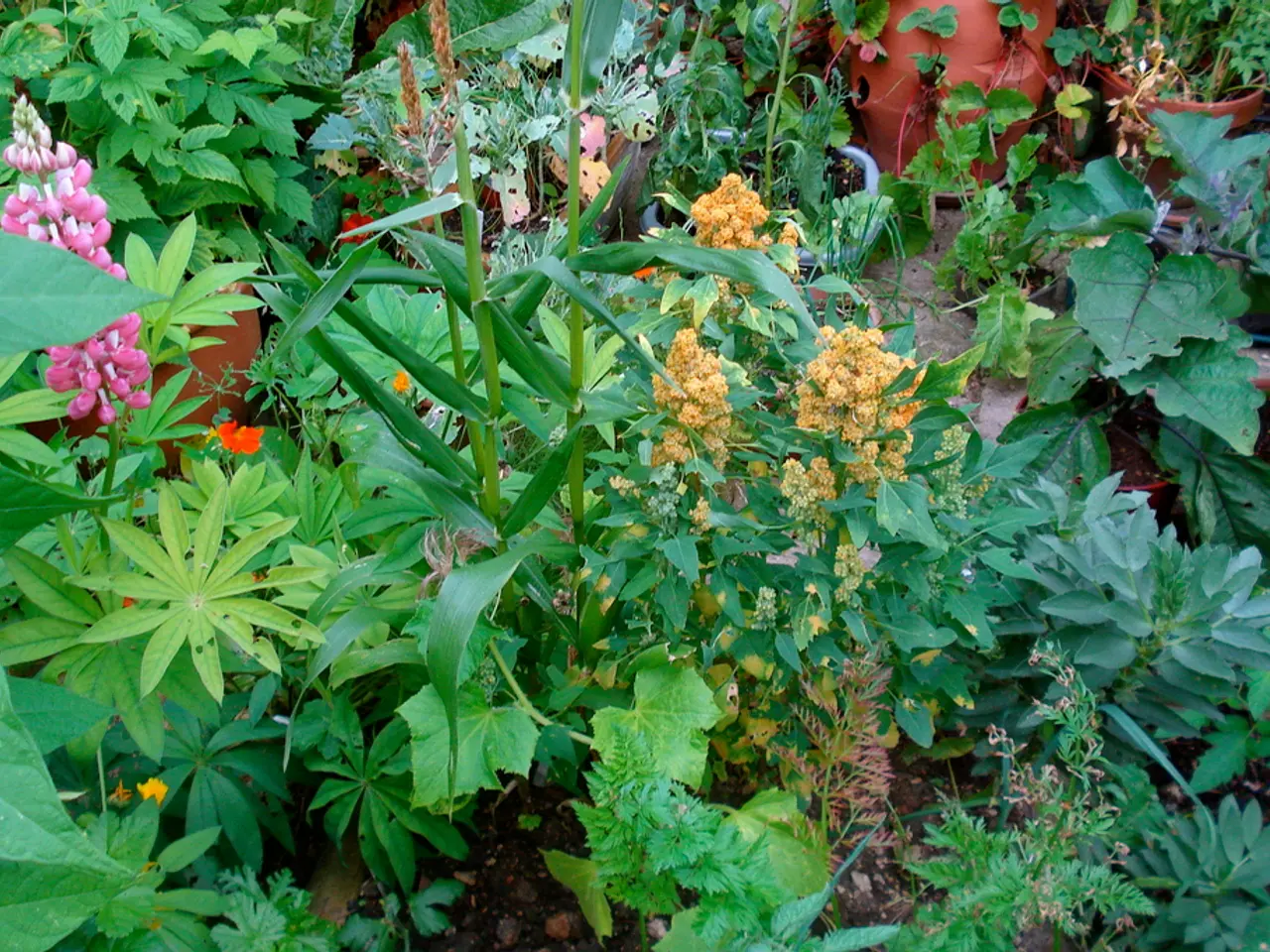Strategies for Saving Water in Your Lawn and Floral Arrangements
Conserving Water in Your Garden: Top Tips for a Thriving and Water-Efficient Space
In today's world, water conservation is more important than ever. Here are some effective methods to conserve water while maintaining a flourishing garden.
1. Deeper Roots, Less Water
Perennial plants, with their roots growing deeper into the soil, consume less water than their annual counterparts. This means that by incorporating more perennials into your garden, you can reduce your water usage significantly.
2. Leaks and Wastage
A leaky hose or outdoor faucet can waste over 6,000 gallons of water per year. Regular checks and prompt repairs are essential to prevent such wastage.
3. Mulch for Moisture Retention
Effective mulching is key to retaining soil moisture and reducing evaporation from the soil surface. This simple practice can greatly help in conserving water in your garden.
4. Deep and Infrequent Watering
Water deeply but infrequently to encourage deeper root growth and improve drought tolerance. This method ensures that the water reaches the roots directly, promoting healthier plants and reducing water waste.
5. Drip Irrigation and Soaker Hoses
Drip irrigation and soaker hoses apply water slowly at the root zone, minimizing waste compared to overhead watering. Automated timers with rain sensors further optimize watering schedules, ensuring your garden thrives without unnecessary water use.
6. Choose Drought-Tolerant Plants
Selecting drought-tolerant or native plants that are adapted to your climate (xeriscaping) requires less supplemental watering, making them a wise choice for water-conscious gardeners.
7. Harvest and Store Rainwater
Collecting rainwater in a barrel, rain barrel, or large food-grade plastic container can be an easy and convenient way to irrigate your garden, reducing your reliance on municipal water. Remember to cover your rainwater collection barrel to keep the water clean.
8. Innovative Irrigation Methods
Innovative irrigation methods like clay pot irrigation (ollas), which slowly release water to plants only as needed, significantly improve water efficiency.
9. Group Plants by Water Needs
Grouping plants by similar water needs helps avoid over- or under-watering sections of your garden, ensuring that each plant receives the right amount of water.
10. Watering Times
Water in the early morning or late afternoon to reduce evaporation losses due to heat and sun.
11. Mulch, Compost, and Soil Amendments
Applying mulch on moist soil, watering regularly, and adding compost, worm castings, and other organic matter can help conserve water in the garden by retaining soil moisture and suppressing the growth of weeds. Increasing organic matter into the soil also helps improve the soil's structure and ability to retain more water, especially in sandy soil.
12. Reusing Greywater
Reusing water from aquarium water, laundry water, bath water, washing vegetables, or washing dishes can be beneficial for gardening.
13. Planter Materials
Glazed pots are able to retain more moisture and are suitable for gardens in hot, dry environments. On the other hand, metal planters heat up quickly and lose more water through evaporation. Porous materials like unglazed terracotta pots tend to lose moisture quickly.
14. Native Plants and Hardy Species
Native plants are more water-efficient than exotic plants as they have adapted to local climates. Grouping hardy plants that thrive in harsh weather conditions together can help maximize water consumption and reduce waste.
15. Regular Maintenance
Regular garden maintenance is crucial to avoid dealing with the same issues again, such as leaks. An automatic rain-shutoff mechanism can help control the amount of rain that falls into an irrigation system, preventing over-watering and saving water for future use.
By implementing a combination of these methods, you can maintain a thriving garden while significantly reducing water usage. Mulching and drip irrigation are among the most universally recommended for their ease and effectiveness, alongside selecting appropriate plants to your climate and soil.
In the realm of environmental-science, adopting a water-efficient gardening lifestyle involves choosing drought-tolerant native plants, such as those recommended in xeriscaping, which require less supplemental water (point 6). Moreover, incorporating innovative irrigation methods like clay pot irrigation (ollas) that release water to plants gradually can improve water efficiency significantly (point 8). Lastly, regularly maintaining your irrigation system with an automatic rain-shutoff mechanism can help prevent over-watering and save water for future use (point 15).





